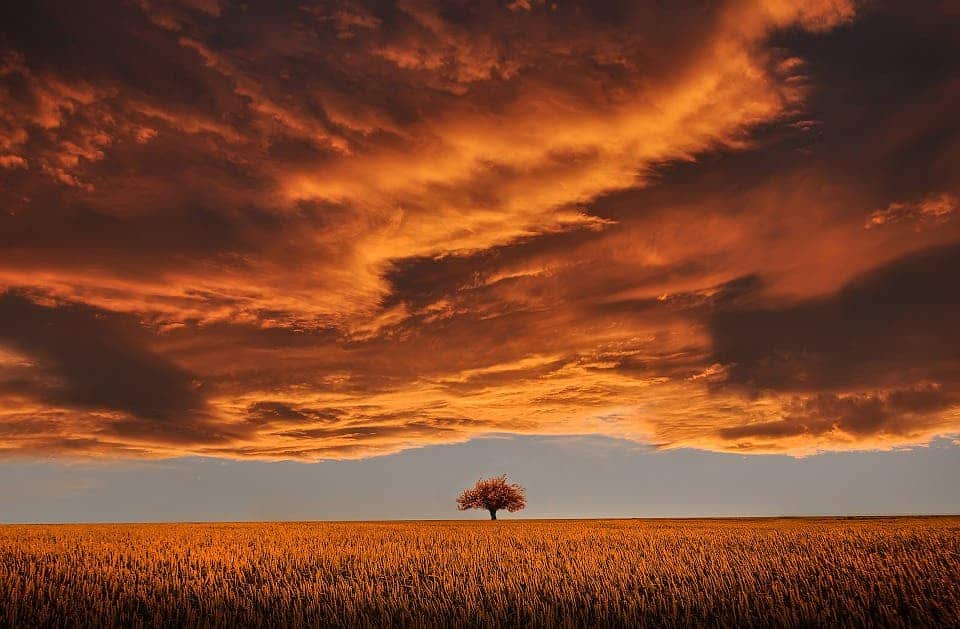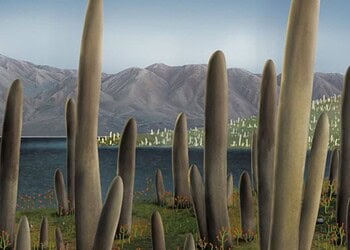The first forests on Earth may have caused massive extinctions of shallow marine life, a new study finds.

An international team of researchers led by members from The University of Alabama finds that the oldest forests in today’s southeastern North America popped up millions of years earlier than previously believed. At the time, North America was part of a minor supercontinent, which suggests that forests spread across all big land masses today at that time.
They also found evidence that this event happened around the same time as a massive extinction event of shallow marine life about 370 million years ago.
Wooden weapons
“This story is, I think, ironic because today trees are the symbol of eco-friendly green life,” said Dr. Takehito Ikejiri, a paleontologist with UA’s Alabama Museum of Natural History and one of the study’s co-authors.
“But, when they first appeared in Earth’s history, they seemed to be harmful and caused big trouble for other life.”
The work offer insight into the global extinctions 370 to 360 million years ago. It also lends some weight to the theory that these events were caused by a lack of oxygen in the ancient waters, as early forests dumped massive quantities of nutrient-rich soils into the oceans, leading to eutrophication.
We call this period in Earth’s history 393 to 382 million years ago the Devonian era. At the time, Earth’s surface was dominated by supercontinents. Present-day North America was meshed with Greenland and much of Europe into a minor supercontinent known as Euramerica. Here, to the best of our knowledge, the first trees (defined as plants with wood tissues) appeared near today’s New York 393 to 382 million years ago and spread across the continent.
Not long after this (in geological time), almost all of the day’s shallow-water species (such as trilobites, corals, and plankton) experienced two massive die-offs. The reason why was unknown, but our running theories included global cooling, extensive volcanism, asteroid impacts, and marine anoxia — the rapid drop of oxygen levels in the seas.
The team believed that this anoxia could be caused by the newly-spawned forests eroding soils with their deep roots, which would then wash into the sea and create an overabundance of nutrients.
They tested their theory by analyzing an outcrop of black shale from the period from northeastern Alabama. This outcrop lay on the southernmost margin of the Appalachian Basin. Geochemical and microscopic data show that forests first appeared in the region 370 million years ago, then spreading to the southern Euramerica landmass. Man Lu, a UA doctoral student in geological sciences and lead author on the paper, analyzed the samples from these shales and reports finding tiny wood fragments in this Devonian formation where no macro-fossils were reported previously.
Further geochemical data also suggest that these forests became an important carbon source to these black shales during the Late Devonian, providing a rough timeline of how fast these forests evolved during the era.
“Our data show the global forestation occurred in a relatively short time,” Ikejiri said. “Trees spread rapidly in very large areas across the Euramerica continent and likely caused a series of drastic environmental changes.”
It’s not a smoking gun, but the evidence does seem to point to a link between the extinctions and these early forests. Dr. YueHan Lu, UA associate professor of geological sciences and corresponding author of the paper, believes the timing of this rapid forestation is interesting considering it occurs near the time of the marine life extinctions.
The paper “Geochemical Evidence of First Forestation in the Southernmost Euramerica from Upper Devonian (Famennian) Black Shales” has been published in the journal Scientific Reports.






